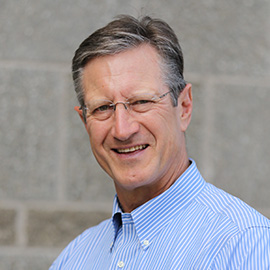6.3 Team Building: The Power of Relationships

Great teams are built on great relationships among the team members. Relationships enable great teams more powerfully than leaders, though leaders play an essential part. Leaders:
- Share a deeply compelling vision that intrinsically motivates each team member
- Reinforce how the team will work together
Great teams self-organize around a shared vision for the difference they can make together. They support each other on their shared journey in a way that enhances one another’s contributions.
The Power of an Intrinsically-Motivating Shared Vision
Research has shown that a shared vision for the difference the team can make together is the only common factor among successful teams. The Guiding Principles that team members follow, and their acceptable boundaries, vary from team to team. Trust and respect are requirements, but they can look very different in each team.
The team’s Purpose and Vision must be in service of others, and align with our Stage III Fulfillment (Contributing to the Benefit of Others, now) or Stage IV Fulfillment (Legacy – Acting for the Benefit of Others, Although We May Not Live to See the Result).
The leader is responsible for ensuring the team is performing at peak performance, unleashing the intrinsic energy found in their shared vision. Enhancing individual contributions is vital, but that support must be in service of bettering the whole. It is never about any individual alone. Leadership reminders of the shared responsibility in service of something bigger keeps the flow moving in the right direction.
An Unusual Shared Vision – Rocky Flats
In their book Making the Impossible Possible: Leading Extraordinary Performance: The Rocky Flats Story, Kim Cameron and Marc Lavine share a remarkable story of a hostile unionized workforce that put itself out of work, voluntarily, and far exceeded the goals of the project.
The Challenge
Cleaning up Rocky Flats, America’s most dangerous nuclear weapons production facility, was estimated to cost $36 billion and take over 70 years. For many years, the unionized workers would not cooperate, as they would be putting themselves out of a job. The culture was toxic, and a solution seemed impossible. Kaiser-Hill was hired to tackle this monumental job.
The Response
Kaiser-Hill taught leaders at Rocky Flats how to engage union members in a positive fashion during assessment phase:
- What is your vision for the future of the site?
- What role can you play in making that possible?
- How do we get started? What should we do?
The Result
The workers did put themselves out of work, while saving $30 billion and finishing the project 60 years sooner than estimated. Why? The team responsible for getting the work done shared a vision that was deeply meaningful to them. They felt individual and collective responsibility to serve that vision. Leadership gave the team the chance to own the outcome. In addition, leadership provided respectful outplacement transition support. They did what humankind does when we have a shared vision that benefits something meaningful that is much bigger than ourselves, they were there for each other.
A Team United, Always – Big 10 Champs
In 1969 and then again in 1971, University of Michigan Football teams I was a part of won Big Ten Championships. The Big Ten Championship had been achieved only once at Michigan in the previous 19 years. How did that happen in two out of three years?
Clarity of Shared Vision. Coach Bo Schembechler conveyed that we were working for something much bigger than ourselves—we were playing for each other, in service of all who cared about the University of Michigan, as a team, not as individuals.
Regular Reinforcement. The shared vision was reinforced daily, that we were there for something much bigger than anything we could do alone. The lessons and results were life changing for those on the team.
Fostering of Deep, Caring Relationships. The deep, caring relationships we had for each other, built on trust and respect, are still powerful to this day, as both teams reunite every five years, because we still care so deeply about each other.
A Team United, On the Court – The Bad Boys
The Detroit Pistons of 1986-1992, known as the Bad Boys, demonstrated how to win as a team, without deep ties and connections with one another off court. The commitment of each team member to the shared vision and purpose of the organization was the essential criterion. They won the NBA Championship twice in a way that captured the attention of the nation. Each player committed to helping the team first, as each had a different role to play in the success, and individually they stayed in their roles; the team success followed.
The Power of Community
When we ask athletes, leaders, or exceptionally talented individuals to share their greatest joys, their greatest accomplishment, most respond with team achievements. Seldom does a reflective person share an individual success over a team success. We are wired for long-term survival as a community.
Leadership Challenge Questions
- What role are you playing as a leader to enhance deep connection to a meaningful shared purpose?
- Is a clear purpose to contribute to the benefit of others now (Stage III Fulfillment) or to contribute to the benefit of others long-term legacy; (Stage IV Fulfillment) the driving force for your decision making?
- What are you doing to build trust in your organization?
- Do all members of your team know they are valued as individual contributors to something greater?
This post is part of series drawn from Fritz Seyferth’s upcoming book on the Foundation of Greatness.







